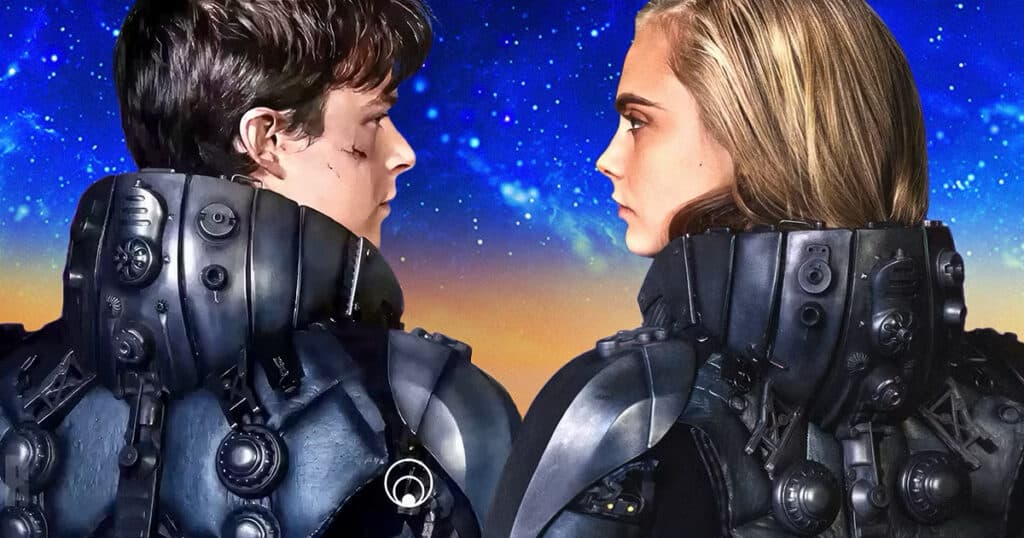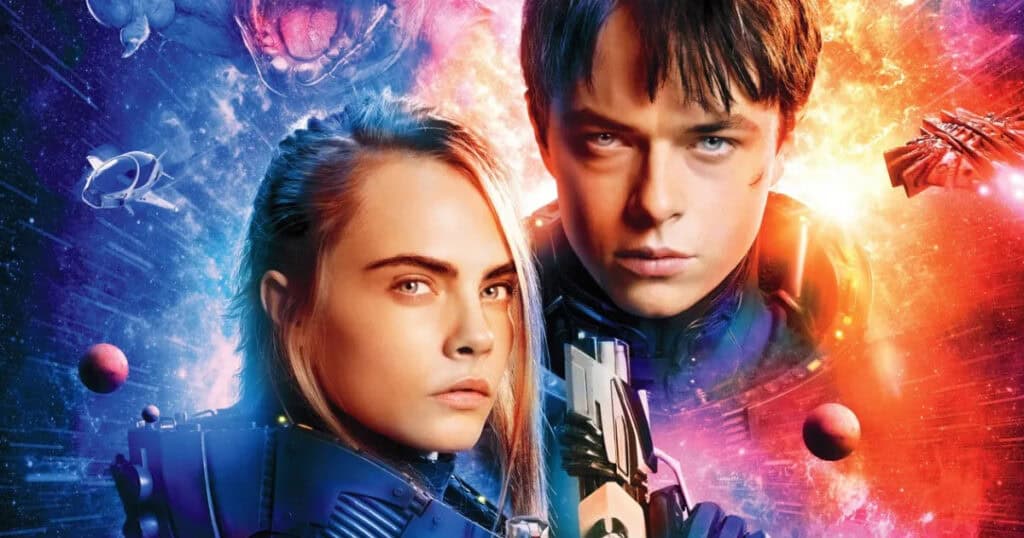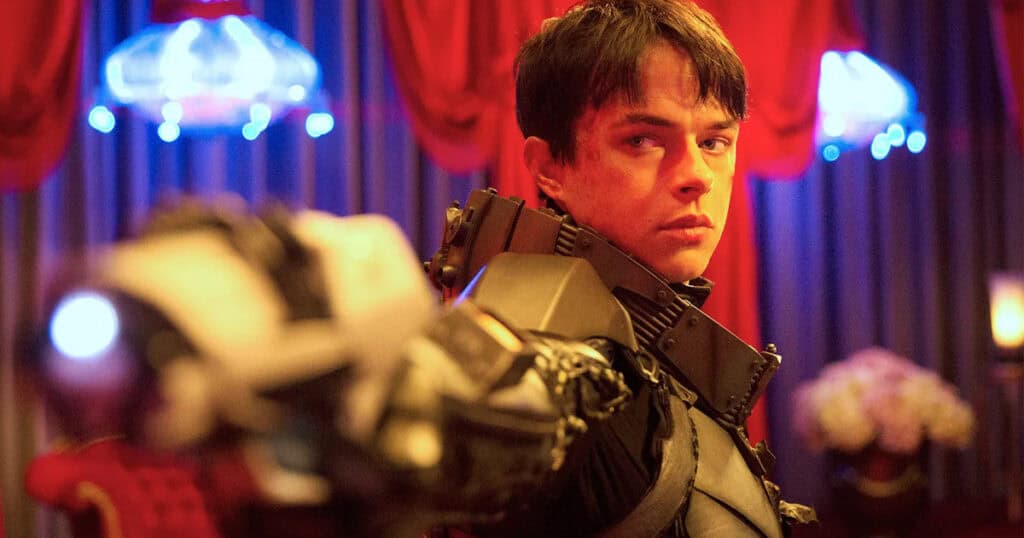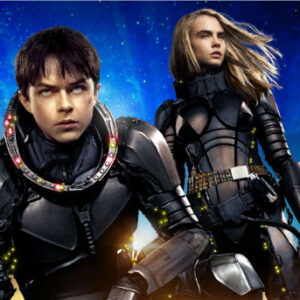When Valerian and the City of a Thousand Planets was announced, it felt like a potential triumph for science fiction cinema. With the visionary director Luc Besson at the helm, best known for his beloved sci-fi classic The Fifth Element, audiences were promised an extravagant space odyssey based on a series of groundbreaking French comic books. Besson’s ambitious goal was to build a cosmic saga with cutting-edge visuals, a sprawling narrative, and an impressive budget of nearly $200 million, making it one of the most expensive European films ever made. The movie boasted a star-studded cast including Dane DeHaan, Cara Delevingne, and Rihanna, and it had the look and feel of an epic new chapter in science fiction cinema. However, when Valerian hit theaters in 2017, the results were disappointing. While praised for its groundbreaking visuals and vast world-building, it failed to connect with mainstream audiences and ultimately suffered a massive financial blow.
What exactly went wrong with it? Well, today we’re going to dive nto the making of the film, its inspirations, its marketing, and the factors that led to its struggles both critically and financially.
Valerian and Laureline, the comic series on which Besson’s film is based, is a French science fiction comic series created by writer Pierre Christin and artist Jean-Claude Mézières in 1967. Over the years, it built a significant fan base, celebrated for its imaginative worlds, complex narratives, and the dynamic relationship between its protagonists, Valerian and Laureline. The series’ influence spread across generations, and it was a noted inspiration for Star Wars, Blade Runner, and Besson’s own The Fifth Element.

The idea of adapting Valerian and Laureline for the big screen was something that had lingered with Besson for decades. After the success of The Fifth Element, he felt ready to tackle Valerian, yet the technology necessary to fully realize its universe wasn’t available. It wasn’t until James Cameron’s Avatar in 2009 that Besson saw the potential for CGI to bring his vision to life. In his words, Valerian had to wait for technology to catch up. Fueled by his passion for the material, Besson took the risk of assembling an enormous budget to do justice to the story’s scale and intricacies.
To bring Valerian to life, Besson launched what could be described as a one-man production powerhouse. His company, EuropaCorp, secured the film’s record-breaking $180 million budget through a combination of foreign pre-sales and personal investment. The stakes were high, as Besson’s financial commitment was essentially a personal gamble.
The production design and visual effects were critical. Besson and his team spent an extensive amount of time constructing the City of a Thousand Planets, a massive, intergalactic metropolis inhabited by countless alien species. This world-building required extensive CGI, with teams of visual effects artists working to create over 2,500 VFX shots—more than any other film of its time. Legendary concept artist Jean-Claude Mézières, co-creator of the original comic, was brought on board to help bring the comic’s visuals to life, ensuring fidelity to the source material.
Besson also focused on hiring top-tier talents for the cast and crew. He cast Dane DeHaan as Valerian and Cara Delevingne as Laureline, hoping their chemistry and youthfulness would appeal to modern audiences. However, this casting was a point of contention. Many critics felt DeHaan lacked the charisma needed for a heroic lead, while others argued Delevingne’s Laureline was underutilized. While the supporting cast included names like Clive Owen, Ethan Hawke, and Rihanna, they were given limited screen time, making their roles feel more like cameos than integral parts of the story.
Valerian received high praise for its visual grandeur. The film’s design—from its alien inhabitants to the dazzling digital landscapes—was hailed as a feast for the eyes. Certain sequences, like the opening montage showing Earth’s diplomatic outreach to other species and the market on a desert planet, were seen as extraordinary showcases of technical creativity. However, despite its mesmerizing appearance, the story itself felt hollow for many.
The film’s plot followed Valerian and Laureline, two space agents tasked with investigating a mysterious threat to Alpha, the titular City of a Thousand Planets. Despite the high stakes, many found the plot convoluted and difficult to follow. The script was criticized for its lack of depth, sacrificing character development for spectacle. The chemistry between Valerian and Laureline, a core element of the comics, was subdued. Critics argued that the dialogue was often clunky and that the relationship between the two leads failed to ignite the charm and romantic tension seen in the comics.

Besson’s vision of a grand space opera came across as overly ambitious, with the plot often wandering off in different directions. Moments that could have been emotionally impactful were overshadowed by the emphasis on visual splendor. As a result, the narrative structure felt uneven, with certain scenes dragging while others moved too quickly.
Marketing Valerian and the City of a Thousand Planets was a challenging task. Though Luc Besson had a loyal following, his name alone was unlikely to attract a mainstream audience, especially in markets like the United States where the Valerian and Laureline comics were relatively unknown. The film’s promotional campaign relied heavily on showcasing its dazzling visuals, yet this emphasis on spectacle may have given audiences the impression that Valerian was all style and little substance.
When Valerian was released in theaters on July 17 2017, it faced stiff competition from other franchises and heavy hitters. The likes of Dunkirk and War for the Planet of the Apes, both of which offered critically acclaimed, character-driven narratives, appealed to a broader audience. Ultimately, Valerian grossed around $225 million worldwide, a number insufficient to cover its extensive production and marketing costs. The lack of name recognition, combined with mixed critical reviews, contributed to its poor performance. The two planned sequels were shelved.

Valerian and the City of a Thousand Planets is both a cautionary tale and a celebration of boundless creative ambition. It demonstrates the risks involved when a filmmaker pushes beyond conventional storytelling norms to pursue an artistic vision that defies mainstream sensibilities. For fans of Besson and the Valerian and Laureline comics, the movie remains a unique, albeit flawed, cinematic achievement. Despite its financial shortcomings, Valerian has garnered a cult following for its audacious visual design and distinct style.
Interestingly, in the years following its release, there has been a reevaluation of Valerian’s impact, especially as the hunger for non-franchise science fiction films has grown. Viewers have come to appreciate its risk-taking approach and the dedication to world-building, aspects often absent in the increasingly franchise-dominated landscape of cinema.
In retrospect, Valerian and the City of a Thousand Planets is a film that deserves to be remembered for its ambition, if not its execution. Luc Besson’s dream of adapting Valerian was a passion project that ultimately became a testament to the challenges of merging personal vision with commercial demands. Though it stumbled in its narrative and failed to capture the hearts of general audiences, its impact resonates within the realm of sci-fi cinema, celebrated for its boldness and visual artistry. While the question of “what happened to Valerian” will likely endure, so will its legacy as a film that dared to dream big and, even if it faltered, left an indelible mark on the genre.
































Follow the JOBLO MOVIE NETWORK
Follow us on YOUTUBE
Follow ARROW IN THE HEAD
Follow AITH on YOUTUBE